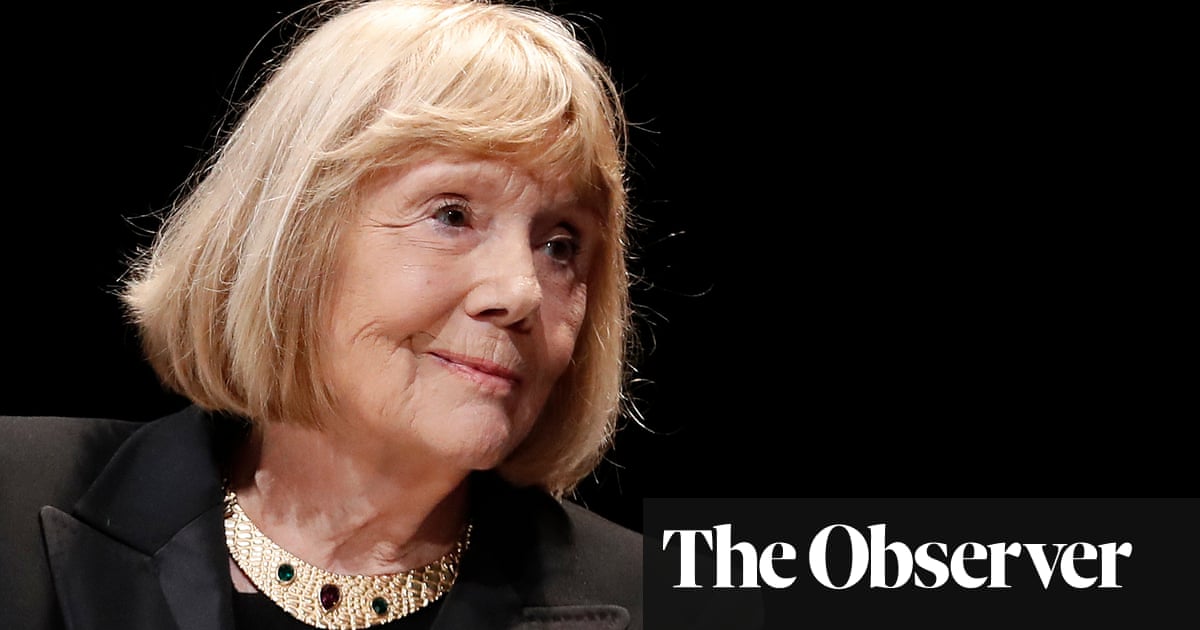
Until she was targeted, Lily Roberts thought protests outside abortion clinics only happened in the US.
Roberts was in her first year at university in Glasgow when she needed an abortion. She wasn’t yet familiar with the city when she made her way to Queen Elizabeth university hospital to take the second abortion pill at the maternity ward. “When I got there, there were 15 to 20 protesters with big placards calling me a murderer, saying: ‘Jesus loves you and your baby – we can help.’ I was petrified,” she says. “It was like crossing a picket line to get to an appointment.”
She worried throughout the 12 hours she spent on the ward. “All I could think about was the fact I’d have to go past them again. It gave me a sinking feeling in my stomach.” One of the protesters tried to hand her then-partner a leaflet when he went to get some fresh air. “It was a feeling of surveillance,” she says, “like they were keeping tabs on who was going in and out of the clinic. It felt very calculated and intentional.”
Roberts, 22, is now a campaigner with Back Off Scotland, the grassroots campaign to implement a national buffer zone outside the country’s abortion clinics. The plan would ban activity aiming to prevent women from accessing abortion care within a certain distance – campaigners suggest 150 metres – of the entrance to a clinic or hospital. As abortion rights activists grapple with the international repercussions of the fall of Roe v Wade, the group reports a steady rise in clinic harassment in recent years in Scotland. According to the British Pregnancy Advisory Service (BPAS), Glasgow was the site of the UK’s biggest recorded targeted anti-choice gathering in the UK in 2018, when about 200 people held a candlelight vigil directly outside the maternity wing entrance of the Queen Elizabeth university hospital.
Back Off Scotland co-founders Lucy Grieve, 25, and Alice Murray, 23, who has also experienced anti-choice harassment, began pushing for zones with a petition to Edinburgh council in autumn 2020. While they were both students at Edinburgh university, Grieve noticed the anti-choice presence outside a sexual health centre near the university library. “It became a bit of a talking point,” says Grieve, who knew Murray through their university’s “active reproductive justice community”. Roberts, who had been involved with a pro-choice student group at university in Glasgow, where she still lives, joined the campaign after seeing their Instagram page and offerred to help “take the lead on the Glasgow side”.
Inspired by a buffer zone enacted in 2018 by Ealing council in west London, Grieve says they initially – “perhaps a bit naively” – thought it was going to be a six-week local campaign. It turned into a multiyear national crusade, as messages poured in from people across the country who had experienced intimidation outside clinics, hospitals and health centres. Grieve soon realised that securing temporary local zones could take up “literally the rest of my life … so we said, let’s get the government to legislate on this, let’s get national bans, let’s ensure there’s continuity.”
Polly Jackman of Sister Supporter – the pro-choice group behind the Ealing buffer zone – knows the limitations of local zones all too well. “It’s like playing really slow whack-a-mole,” she says. The public-order tool that underpins local buffer zones in England and Wales, the public spaces protection order, requires renewal every three years and there are just three in place across England’s clinics, despite 50 clinics being targeted since 2018.
Buffer zones are solely about safeguarding access to healthcare, Grieve emphasises. “It’s not about the freedom of speech or freedom to protest,” she says, referring to a common argument used by anti-abortion activists. “People have their personally held views – that’s their right. But when it starts to affect access to something as important as healthcare and something that’s as frequently accessed as abortion healthcare – one in three women in the UK will have an abortion during their lifetime – there need to be zones in place. A right to freedom of speech and protest doesn’t come with a right to access to an audience.”
The campaign has faced hurdles in its two years, Grieve says, and until very recently she did not feel that victory was in sight. She only began feeling “cautiously optimistic” in June after the first minister, Nicola Sturgeon, committed to establishing buffer zones, giving her government’s backing to a member’s bill introduced by the Green MSP Gillian Mackay and sponsored by BPAS and Back Off Scotland. After months of feeling like the political will for national legislation was missing, Grieve says this was a gamechanger.
Murray says the campaign’s Instagram got a “ridiculous amount of followers within the first 24 hours” after they received Sturgeon’s support and that this kept her going, along with her firsthand experience of protesters outside an Edinburgh sexual health centre. “I knew how that felt,” she says. “I knew that I didn’t want it to happen to anyone else and that people were at risk.”
Although the Scottish campaign now has backing from Holyrood, it could be England and Wales that see zones introduced first as Back Off Scotland does not expect legislation to be enacted for at least a year. BPAS, which set up the Back Off campaign in England and Wales, has sponsored the legislation in Westminster, most recently with the Labour MP Rupa Huq’s amendment on the public order bill, which calls for buffer zones to be implemented. The amendment was withdrawn in June, but BPAS’s chief of staff, Rachael Clarke, says it is likely to be brought back later this year. “It’s really just a matter of parliamentary time,” she says. “If it got to the floor of parliament, we’ve got the support to win it.”
Abortion rights are not a “settled issue” in the UK, Clarke says, against the backdrop of prosecutions for terminations allegedly carried out outside the 1967 Abortion Act. It comes as the government faces international pressure to explain why commitments to abortion and sexual health rights have been cut from a statement on gender equality. It adds to a series of regressive positions taken by backbenchers and cabinet ministers, from the Conservative MP Danny Kruger stating that he disagreed with the idea that “women have an absolute right to bodily autonomy” in the case of abortion, to the then culture secretary Nadine Dorries calling for the abortion time limit to be reduced by four weeks.
“We need people to recognise that these are hard-won rights,” says Clarke. “People are always going to need to stand up for them.”
“I really think that we should be making more parallels to what is happening internationally,” Roberts says, pointing to attacks on US abortion service providers. (There have been thousands of criminal incidents in the US since the 1970s, including 11 murders, 42 bombings and 196 arsons, according to the National Abortion Federation.) “I don’t want to stir up panic, but we have to be vigilant. It’s absolutely critical that buffer zones are implemented as a matter of urgency.”
The overturning of Roe v Wade has made safe zones even more vital, says Roberts. “There’s been a notable increase in the audacity of the protesters,” she says, describing, in particular, protesters who “rant” using megaphones. “When their microphones are taken off them, they just scream. They just yell obscenities and abuse into the clinic.”
Kerry Abel, the chair of Abortion Rights, emphasises that the UK anti-choice movement is “coming from a low base” of public support and has been “less effective” at legislative campaigns. But activists target access as well as the law. “If abortion isn’t accessible to most people, [including] the most vulnerable, then it doesn’t matter whether you put it in law,” she says, adding that ensuring patients can obtain care requires well-funded services, accessible from rural areas, free from intimidation. Due to a lack of commissioned services in Scotland, no health board has the ability to offer terminations up to the longstanding 24-week limit, Grieve adds, with some clients having to travel as far as Bournemouth for care. Although 98% of terminations in Scotland are performed before 20 weeks, at least 170 abortion clients have been sent over the border since 2019.
Nowhere in the UK is the gap between legislation and access starker than in Northern Ireland. Despite the decriminalisation of abortion in 2019, Northern Ireland’s openly anti-abortion health minister, Robin Swann, has refused to fully commission services, meaning that trusts have “no budget, no central services, no central access point,” says Naomi Connor, co-convener of Alliance for Choice. Four out of five health trusts are providing abortion up to 10 weeks – but this is a far cry from the 24-week limit (where continuing pregnancy poses risk to the health of the patient). With no information about abortion services published on the Department for Health website, Connor says that clients often reach the anti-choice organisation Stanton Healthcare instead, which has been accused of masquerading as a pregnancy support centre.
Alongside a lack of information and funded services, harassment outside abortion providers is a real barrier to access, Connor says. Though Northern Ireland passed legislation for safe zones in March 2022, it has not been enacted as the attorney general’s office referred it to the UK supreme court. “In rural, small communities people are really fearful of being seen attending the hospital or clinic … because of the biggest barrier: stigma,” she says. “Since decriminalisation, protesters really have made their presence known.”
Introducing a buffer zone would have immediate, tangible effects for access throughout the UK: Back Off Scotland often gets messages from people asking if there are protesters outside a certain clinic, as they don’t feel able to attend if so. “Obviously, the main thing is that it will be more accessible,” Murray says, remembering how isolating it felt to be targeted herself. But she is aiming for changes in the way Scotland views abortion, too. “We’re not focusing on the ethics of abortion, but looking at it as access to healthcare. I hope that this changes the conversations in other ways, and then we can look at other things, like telemedicine abortion care.”
Roberts says that being harassed outside the hospital “sparked something” in her. Anti-choice movements shouldn’t be given an inch, she says. “Every day it’s left unattended, these people will get bolder. There’s a duty of government – but they’re not going to listen until a bit of noise is made.”
Do you have an opinion on the issues raised in this article? If you would like to submit a letter of up to 300 words to be considered for publication, email it to guardian.letters@theguardian.com












